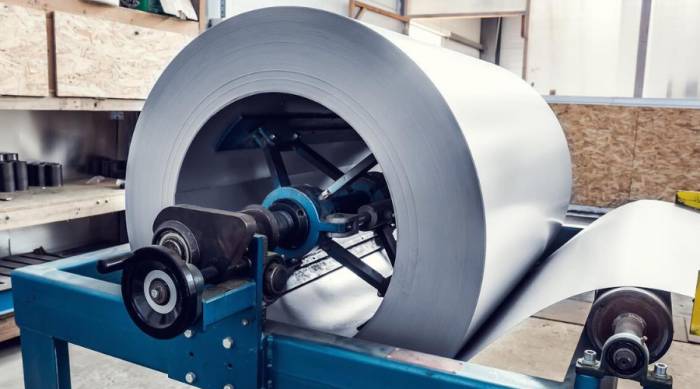How precision stamping manufacturers determine the direction of stamping and str
2024-03-08
How can the overall quality of precision stampings be improved from various aspects?
Precision stamping is a complex process that involves the precise and efficient shaping of metal components. An important aspect of precision stamping is determining the direction of the stamping and drawing parts. In this article, we will delve into the techniques employed by precision stamping manufacturers to determine the correct direction of these parts. Understanding how to determine the drawing direction is crucial for ensuring the dimensional accuracy, strength, and functionality of the final product.
The significance of the drawing direction in precision stamping
The drawing direction refers to the orientation of the grain structure of the material after it has been through the stamping process. Proper alignment of the drawing direction is crucial as it affects several key factors, including mechanical properties, formability, and overall part performance. Achieving the desired drawing direction is essential for ensuring optimal functionality and meeting design specifications.
Techniques for determining the drawing direction
Advertisement
Visual inspection and texture patterns
Visual inspection is one of the initial techniques used by precision stamping manufacturers to determine the drawing direction. Experienced operators carefully examine the stamped parts to identify any visible texture patterns or marks left during the drawing process. These patterns can provide valuable clues about the drawing direction.
Material grain analysis
Material grain analysis is another method used to determine the drawing direction. This involves examining the grain structure of the material to understand how it has been oriented during the stamping process. Advanced techniques such as X-ray diffraction or electron backscatter diffraction can be employed to analyze the grain structure and confirm the drawing direction.
Magnetic particle inspection
Magnetic particle inspection is a non-destructive testing method that can be used to detect surface and near-surface defects in the stamped parts. This method can also provide information about the drawing direction by revealing the alignment of the material's magnetic properties, which can be influenced by the grain structure and the direction of the stamping process.
Computer-aided design (CAD) and simulation
Computer-aided design (CAD) and simulation tools can be used to model the stamping process and predict the drawing direction. These tools allow manufacturers to simulate different stamping conditions and optimize the process to achieve the desired drawing direction.
Quality control and inspection
Regular quality control checks and inspections are essential to ensure that the drawing direction is maintained throughout the production process. This includes the use of gauges, coordinate measuring machines (CMMs), and other inspection equipment to verify the dimensional accuracy and alignment of the stamped parts.
By employing these techniques and maintaining a rigorous quality control process, precision stamping manufacturers can ensure that the drawing direction is accurately determined and controlled, leading to high-quality stamped parts that meet the required specifications.To more accurately determine the stretching direction, precision stamping manufacturers often conduct material grain analysis. This involves sectioning the stamped parts and examining the microstructure of the material using techniques such as optical or electron microscopy. By analyzing the grain structure and orientation, manufacturers can precisely identify the stretching direction.
Tensile Testing
Tensile testing is another common method used in precision stamping to determine the stretching direction. A sample is subjected to controlled tension until it fractures. By analyzing the fracture surface, manufacturers can determine the direction in which the material elongates and ascertain the stretching direction. Tensile testing provides quantitative data, which is particularly useful for materials with less distinct texture patterns.
Directional Markings and Indicators
To simplify the identification of the stretching direction, precision stamping manufacturers often use directional markings or indicators. These markings are typically placed on the material before the stamping process to provide a visual reference for the correct orientation of the stamped parts. Directional markings can take the form of notches, lines, or symbols to indicate the desired stretching direction.

The Importance of Accurate Stretching Direction
Accurately determining the stretching direction is crucial for precision stamping. Here are some key reasons why it is essential:
Size Precision:
The stretching direction has a significant impact on the dimensional accuracy of stamped parts. Aligning the stretching direction with the intended design ensures that the final components meet the specified tolerances and fit correctly within assemblies. Deviations in the stretching direction can lead to inconsistencies and potential issues during assembly processes.Mechanical Properties:
The orientation in the direction of tensile force plays a crucial role in determining the mechanical properties of stamped metals. Factors such as tensile strength, yield strength, elongation, and hardness are all influenced by the direction of stretching. Proper alignment of the tensile direction ensures the achievement of the desired mechanical properties, thereby providing the components with optimal strength and performance.
Formability and Integrity:
Correctly aligning the tensile direction can enhance the formability of the material during the stamping process. When the tensile direction is consistent with the desired direction, material flow can be more effectively controlled, thereby minimizing the risk of defects such as wrinkles, tears, or ruptures. Components with the correct tensile direction exhibit higher integrity, consistency, and overall quality.
Reduction of Material Waste:
Accurately determining the tensile direction also helps to reduce material waste. By ensuring proper alignment, precision stamping manufacturers can optimize material usage, minimize scrap, and improve overall production efficiency.
Conclusion:
Determining the tensile direction is a key aspect of precision stamping for the manufacture of high-quality metal components. By using techniques such as visual inspection, material grain analysis, tensile testing, and the use of directional markings, manufacturers can ensure the correct alignment and orientation of stamped and stretched parts. Accurate tensile direction directly affects dimensional accuracy, mechanical properties, formability, and component integrity. By prioritizing the correct tensile direction, precision stamping manufacturers can provide high-quality products that meet the strict requirements of various industries.
Comments